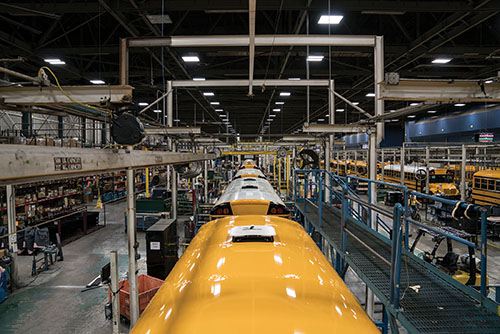
By the BF Staff
From the September/October 2022 Issue
Business Facilities: Tell us about the state of economic development in Oklahoma.
Kisling: Oklahoma’s economy has performed incredibly well. Instead of shutting down [during the COVID-19 pandemic], we worked hard to keep businesses operating. Our GDP is above pre-pandemic levels from 2019 so not only did we not slow down as much as others, but we have continued to move forward. Additionally, we’ve had surplus fiscal budgets, allowing us to save for the future while also investing more in core services and new programs.
BF: Why should companies consider Oklahoma for relocation or expansion? What are target industries?
Kisling: Many companies are looking to relocate or expand—our economic development pipeline has never been fuller. The Oklahoma Team is working projects across all industries—in particular, aerospace and defense (our second largest and fastest-growing sector) and automotive.
Our aerospace and defense sector is enticing to companies because of our well-established companies and assets. Most people don’t know that Oklahoma is home to the two largest Maintenance, Repair & Overhaul (MRO) facilities in the world—Tinker Air Force Base, the largest Department of Defense air depot, and American Airlines, the world’s largest commercial MRO facility. Additionally, this sector boasts extensive training programs across all areas of education (K-12 through higher education) to ensure that our talent pipeline stays strong.
When it comes to automotive, companies see potential. In Oklahoma, automotive manufacturers and suppliers can take advantage of our lower labor rates and an extremely central location connecting to not only the U.S. via interstates, but also to the world from in-land, ice free ports.
We’re not exactly new to the automotive game, despite what many think. More than 300 auto entities operate in the state today. We’re home to luxury vehicle manufacturers like Sport Chassis and Newell Coach, school bus manufacturer IC Bus, and some of the nation’s largest tire manufacturing facilities—Goodyear and Michelin.

To bolster the desirability of Oklahoma for these and other industries, it’s important to acknowledge the state’s impressive renewable energy options and consistently low cost of energy. As companies look to increase sustainability and decrease carbon footprints, Oklahoma’s access to low-cost renewables is a key selling point across all industries. Not only does the state offer the lowest industrial electricity cost in the U.S., but nearly half (45%) of energy generated in Oklahoma comes from renewable sources—putting us third in the U.S. for total electricity net generation from renewables.
While we may not be the only state to offer a low cost of doing business (although we’re definitely one of the lowest), we go well beyond that. In Oklahoma, we continually set ourselves apart by the ways we work with businesses to find solutions. In the past year, Oklahoma has taken significant steps to support businesses in a challenging and ever-changing global marketplace.
Supply chain strengthening and development took center stage in 2021 as the world continued to deal with supply chain issues from the COVID-19 pandemic. Oklahoma responded by launching Connex Oklahoma, a partnership with the Oklahoma Manufacturing Alliance, that provides a free supply chain database tool for the manufacturing industry. Since its launch in April 2021, more than 400 Oklahoma companies are utilizing the platform.














![[VIDEO] Get More for Your Business in Ardmore. Oklahoma](https://businessfacilities.com/wp-content/uploads/2024/02/maxresdefault-324x160.jpg)
